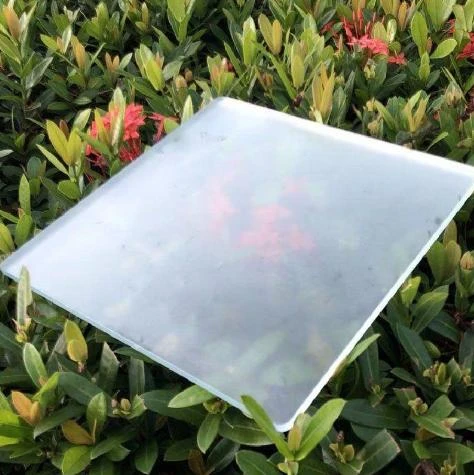Exploring Decorative Glass Textures A Fusion of Art and Functionality
In the world of interior design and architecture, decorative glass textures have become a popular medium that seamlessly blends artistic expression with functional utility. From shimmering mosaics to frosted panes, the versatility of glass allows for a wide range of textures, each offering unique aesthetic and practical benefits. This article delves into the fascinating world of decorative glass textures, highlighting their applications, styles, and impact on modern design.
Firstly, decorative glass textures enhance the visual appeal of spaces. Textured glass can diffuse light beautifully, creating soft patterns that add depth and interest to both residential and commercial environments. For example, rippled or dimpled glass can transform an ordinary window into a stunning focal point, while still allowing natural light to filter in. Additionally, the interplay between glass texture and light creates a dynamic atmosphere, as changing sunlight throughout the day reveals new subtleties in the glass’s design.
One of the most popular types of decorative glass is etched glass, renowned for its elegant, frosted appearance. This technique involves sandblasting or using acids to create intricate patterns or images on the glass surface. Etched glass is often utilized in private spaces such as bathrooms or office partitions, providing privacy without sacrificing light. Beyond functionality, etched designs can reflect the personality of the inhabitants, making it a favored option for custom projects.
decorative glass texture
In contrast, textured glass, such as bubble or aquarium glass, features deeper reliefs, creating a more tactile experience. These types of glass can evoke feelings of movement and fluidity, which can be particularly captivating in spaces like lobbies or water-themed environments. The unique surfaces of textured glass can also obscure views while maintaining brightness, striking a balance between openness and intimacy.
When integrating decorative glass textures into a design scheme, it’s essential to consider the surrounding elements. Pairing textured glass with complementary materials, such as wood or metal, can enhance its beauty and create a harmonious environment. For instance, combining a sleek, modern glass panel with warm wooden accents can create an inviting yet sophisticated space.
Furthermore, the durability of decorative glass makes it an ideal choice for high-traffic areas. Unlike traditional wall coverings, textured glass is resistant to wear and tear, ensuring that it remains beautiful over time. Its easy maintenance also makes it a practical option for both residential and commercial settings.
In conclusion, decorative glass textures play a significant role in contemporary design, offering a wide array of possibilities that cater to artistic expression while serving functional needs. From etched patterns to textured surfaces, these glass designs provide depth, light, and a touch of elegance to any space. As designers and homeowners continue to explore innovative ways to incorporate glass textures, the potential for creativity is boundless, promising to shape the future of interior design. Embracing this trend not only enhances visual aesthetics but also invites a whimsical interplay of light and form into our living and working environments.
 Afrikaans
Afrikaans  Albanian
Albanian  Amharic
Amharic  Arabic
Arabic  Armenian
Armenian  Azerbaijani
Azerbaijani  Basque
Basque  Belarusian
Belarusian  Bengali
Bengali  Bosnian
Bosnian  Bulgarian
Bulgarian  Catalan
Catalan  Cebuano
Cebuano  Corsican
Corsican  Croatian
Croatian  Czech
Czech  Danish
Danish  Dutch
Dutch  English
English  Esperanto
Esperanto  Estonian
Estonian  Finnish
Finnish  French
French  Frisian
Frisian  Galician
Galician  Georgian
Georgian  German
German  Greek
Greek  Gujarati
Gujarati  Haitian Creole
Haitian Creole  hausa
hausa  hawaiian
hawaiian  Hebrew
Hebrew  Hindi
Hindi  Miao
Miao  Hungarian
Hungarian  Icelandic
Icelandic  igbo
igbo  Indonesian
Indonesian  irish
irish  Italian
Italian  Japanese
Japanese  Javanese
Javanese  Kannada
Kannada  kazakh
kazakh  Khmer
Khmer  Rwandese
Rwandese  Korean
Korean  Kurdish
Kurdish  Kyrgyz
Kyrgyz  Lao
Lao  Latin
Latin  Latvian
Latvian  Lithuanian
Lithuanian  Luxembourgish
Luxembourgish  Macedonian
Macedonian  Malgashi
Malgashi  Malay
Malay  Malayalam
Malayalam  Maltese
Maltese  Maori
Maori  Marathi
Marathi  Mongolian
Mongolian  Myanmar
Myanmar  Nepali
Nepali  Norwegian
Norwegian  Norwegian
Norwegian  Occitan
Occitan  Pashto
Pashto  Persian
Persian  Polish
Polish  Portuguese
Portuguese  Punjabi
Punjabi  Romanian
Romanian  Russian
Russian  Samoan
Samoan  Scottish Gaelic
Scottish Gaelic  Serbian
Serbian  Sesotho
Sesotho  Shona
Shona  Sindhi
Sindhi  Sinhala
Sinhala  Slovak
Slovak  Slovenian
Slovenian  Somali
Somali  Spanish
Spanish  Sundanese
Sundanese  Swahili
Swahili  Swedish
Swedish  Tagalog
Tagalog  Tajik
Tajik  Tamil
Tamil  Tatar
Tatar  Telugu
Telugu  Thai
Thai  Turkish
Turkish  Turkmen
Turkmen  Ukrainian
Ukrainian  Urdu
Urdu  Uighur
Uighur  Uzbek
Uzbek  Vietnamese
Vietnamese  Welsh
Welsh  Bantu
Bantu  Yiddish
Yiddish  Yoruba
Yoruba  Zulu
Zulu 

